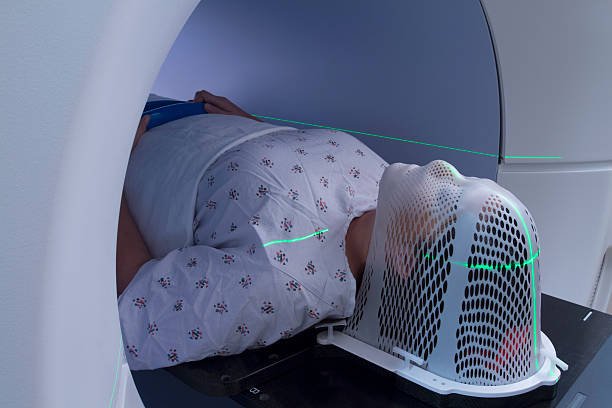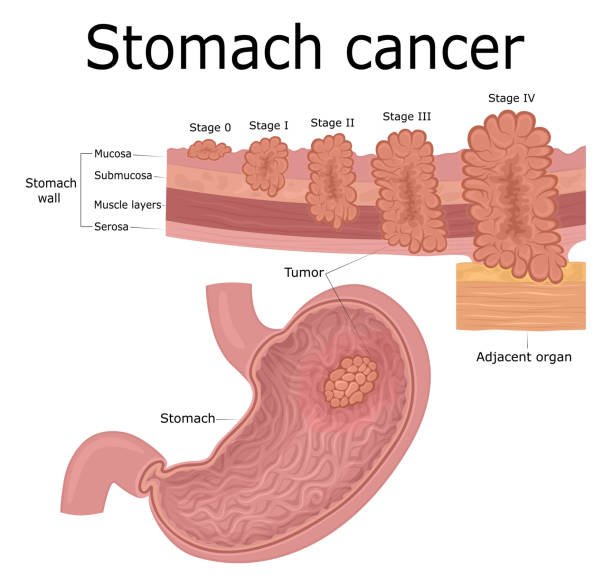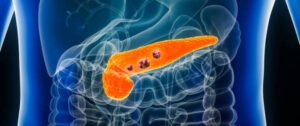
Stomach Cancer Diagnosis and Treatment
According to the World Cancer Research Fund, stomach cancer is the fifth leading cause of cancer death in the world. Since most stomach cancers are diagnosed at an advanced stage, early diagnosis and treatment are crucial. In particular, it refers to stomach cancer that can be removed by surgery. This article will analyze the methods of gastric cancer diagnosis and treatment, including some stomach cancer screening tools and comprehensive treatments to provide patients with the best treatment results.
Prediagnostic evaluation of stomach cancer
Generally speaking, there is no so-called early diagnosis of gastric cancer, or which group should be diagnosed and the guidelines to follow, John. Sovani, a gastroenterologist at The Johns Hopkins Hospital. Saowanee Ngamruengphong pointed out that doctors usually assess the patient’s gastric cancer risk to determine the progress of screening. The following are the three main risk groups.
- Have a stomach infection
- Have hereditary diseases, such as Hereditary Non-Polyposis Colorectal Cancer (also known as Lynch Syndrome) and Peutz-Jeghers Syndrome, or a family member suffering from stomach cancer
- Smokes

Diagnostic methods for stomach cancer
- Endoscopy
When it comes to stomach cancer diagnosis, we may all think of endoscopy, but other diagnostic methods are equally important. Details are as follows.The purpose of a physical examination is to allow doctors to understand the patient’s overall health status and observable symptoms of stomach cancer, such as whether there are hard masses or abnormalities in the abdomen. Secondly, the patient’s daily habits and disease history can also help clarify the cause of gastric cancer. If the doctor finds stomach cancer or other stomach problems, he may refer the patient to a gastroenterologist for further examination. - Blood test
For stomach cancer diagnosis, the doctor may ask the patient to do a Complete Blood Count, which is a blood test to confirm whether there is anemia in the body. Other blood tests include fecal occult blood tests and blood chemistry studies, the latter of which is especially important for patients undergoing surgery to ensure that their liver, kidneys and coagulation functions are normal. - Endoscopy and biopsy
The most important method for gastric cancer diagnosis, the medical name is Esophagogastroduodenoscopy, also known as Panendoscopy. By attaching a small camera lens to the endoscope, it is then placed into the patient’s mouth. It extends all the way to the stomach, allowing doctors to check whether there is any possibility of cancer inside the organ. If there are cell mutations, small surgical tools can be used to conduct a biological examination to determine whether there are cancer cells.
There is another type called endoscopic ultrasound. The patient is usually given a sedative first, and then a small converter is attached to the end of the endoscope, which is then put into the patient’s mouth, extending to the stomach, and the converter is attached to the stomach wall of cancer cells. superior. Using the reflection principle of ultrasound and the imaging processing of the converter, doctors can check the size and spread of gastric cancer, including whether nearby tissues and lymph nodes have been affected. If abnormalities are found, a small needle can be used for a biological examination. - Diagnostic imaging
In addition to examining the location of cancer in the body and its spread, diagnostic imaging can also help monitor the effectiveness of treatment. The following are five common diagnostic imaging methods for gastric cancer.
- Upper gastrointestinal tract photography examination:
also called barium swallow examination, it is a type of Light penetration can also show any organ variation. However, this test may miss some abnormal areas and cannot be used for biological examination. - CT scan:
The correct name is Computerized Tomography (Computed Tomography, or Computerized Axial Tomography, CAT in English). It is a type of X-ray that can clearly show the details of the stomach, adjacent lymph nodes and organs. , creates cross-sectional area and three-dimensional imaging to help determine the location, stage, and suitability of surgery for cancer. If contrast agent is used before a CT scan, the imaging effect will be more obvious. - PET scan:
Unlike CT scan, PET scan (Positron Emission Tomography, Chinese for positron tomography) lacks details. By injecting a micro-radioactive sugar into the patient, the cancer cells will also appear in the special camera, which can then Detect its systemic cancer cell response. This is particularly useful in situations where the cancer may have spread, but you don’t know where, but it’s less helpful for types of stomach cancer that are less responsive to glucose. The good news is that there are new medical machines that can perform both CT and PET scans at the same time. - MRI scan:
Similar to CT scan, MRI scan (Magnetic Resonance Imaging, Chinese for magnetic resonance imaging) can show the details of cellular tissue, but it does not use X-rays, but radio waves and strong magnetism. - Chest X-ray:
Helps check whether cancer cells have spread to the lungs and whether there is serious lung or heart disease. If a lung CT scan has been done, this test is not required.
- Upper gastrointestinal tract photography examination:
- Laparoscopic surgery
When CT and PET scans miss some small tumors, laparoscopic surgery can come in handy. First, the patient is given general anesthesia, and then a small incision is made in the abdominal wall so that the laparoscope can enter it to examine the internal organs for abnormalities. If necessary, do a physical examination if necessary. In addition, doctors can also use saline solution to clean the surface of the organ. This process is called peritoneal washout. If cancer cells are found in the biopsied part after cleaning, it also means that gastric cancer has spread.

Stomach cancer treatment
Basically, gastric cancer treatment can be divided into two types: traditional and clinical trials. The former is the main treatment currently implemented, and the latter is a new treatment in experimental research. In fact, many traditional cancer treatments are based on clinical trial data. Patients While receiving treatment, it also indirectly contributes to research related to cancer treatment.
It should also be noted that some clinical trials are limited to patients who have not received other treatments, and some are only given to patients whose cancer has not improved. Even after the course of treatment, follow-up testing may continue. This is to monitor the patients. health status and reduce the likelihood of cancer recurrence. In this regard, here are seven traditional gastric cancer treatments, as well as treatment suggestions based on different gastric cancer stages.
- Operation
Regardless of the stage of gastric cancer, surgery is a common treatment method. It can be roughly divided into subtotal gastrectomy and total gastrectomy. There is no doubt that the difference between them is the size of the gastric resection. In addition, it may also be And nearby lymph nodes, tissues, organs and spleen are removed. However, if the stomach tumor creates an obstruction and cannot be removed by traditional surgery, the following methods may be considered.
- Intraluminal stent: A thin, expandable stent is placed to keep the blood vessel or esophagus open so that the patient can eat normally.
- Intracavitary laser treatment: An endoscope equipped with a laser is inserted into the patient’s body. Laser is an intense beam of light that can be used as a sharp knife.
- Gastric Bypass Surgery: This surgery removes stomach structures that block the entrance to the small intestine.
- Intraluminal stent: A thin, expandable stent is placed to keep the blood vessel or esophagus open so that the patient can eat normally.
- Endoscopic mucosal resection
Without surgery, using only an endoscope and some medical gadgets, endoscopic mucosal resection can remove precancerous cells from the intestinal wall. - Chemotherapy
Depending on the type and stage of gastric cancer, chemotherapy can be administered orally, intravenously or intramuscularly, into the patient’s blood, and then delivered throughout the body to inhibit the division and growth of cancer cells, or to kill them. This process is also called systemic chemotherapy. In addition, chemotherapy can also pass through the cerebrospinal fluid of organs or body cavities, such as the abdomen, and only affects the cells and tissues in that area. This is called localized chemotherapy. - Radiation therapy
It refers to the use of high-energy radiation, such as high-energy X-rays, to inhibit or kill cancer cells. Taking external radiation therapy as an example, this medical device can deliver radiation energy from outside the body to affect target parts of the body. - Chemoradiotherapy
As the name suggests, chemoradiation therapy represents the fusion of chemotherapy and radiation therapy to enhance the effectiveness of both treatments. This treatment can be applied before surgery or after surgery. The former is called preoperative adjuvant therapy, which is used to shrink tumors, and research is still ongoing; the latter is postoperative adjuvant therapy, which can reduce the recurrence rate of cancer. - Targeted therapy
Milder than chemotherapy and radiation therapy, targeted therapy uses drugs or other ingredients to identify and attack specific cancer cells. The following are the two main methods of gastric cancer treatment.
- Monoclonal antibody treatment: Made from a single type of immune cell, through immersion, it can identify the components of the patient’s specific cancer cells, or components that help cancer cells grow, and attach to them to inhibit and kill cancer cells.
- Multi-kinase inhibitors: This small molecule drug can penetrate the cell membrane of cancer cells and block multiple protein signals that help them grow. Some multi-kinase inhibitors even have the function of blood vessel growth inhibitors.
- Monoclonal antibody treatment: Made from a single type of immune cell, through immersion, it can identify the components of the patient’s specific cancer cells, or components that help cancer cells grow, and attach to them to inhibit and kill cancer cells.
- Immunotherapy
Immunotherapy can help patients fight cancer by boosting, guiding, and restoring the body’s natural defenses against cancer, and immune checkpoint inhibitors are part of this effort. For example, when the PD-1 receptor of T cells binds to the PD-L1 (ligand of PD-1) of cancer cells, it inhibits T cells from attacking the cancer cells. At this time, PD-1 inhibitors It comes into play, it can interfere with the connection between PD-1 and PD-L1, allowing T cells to kill the cancer cells.

Stomach cancer treatment recommendations by stage
The following are staging recommendations for gastric cancer treatment, but please rely on the medical judgment of professional physicians.
- Gastric cancer stage 0 (carcinoma in situ)
- Total gastrectomy, or subtotal gastrectomy
- Intraluminal stent
- Total gastrectomy, or subtotal gastrectomy
- Gastric cancer stage 1
- Total gastrectomy, or subtotal gastrectomy
- Intraluminal stents (for some patients with stage 1a gastric cancer)
- Surgery and chemotherapy
- Surgery combined with chemotherapy and radiotherapy
- Preoperative adjuvant chemoradiotherapy (clinical trial)
- Total gastrectomy, or subtotal gastrectomy
- Gastric cancer stages 2 and 3
- Total gastrectomy, or subtotal gastrectomy
- surgery and chemotherapy
- Surgery combined with chemotherapy and radiotherapy
- Preoperative adjuvant chemotherapy (clinical trial)
- Preoperative adjuvant chemoradiotherapy (clinical trial)
- Total gastrectomy, or subtotal gastrectomy
- Stomach cancer stage 4
This stage of treatment also includes cases where gastric cancer has recurred and cannot be treated with surgery.
- Removal of gastric obstruction with intraluminal stent, intraluminal laser treatment, or gastric bypass surgery
- Monoclonal antibody targeted therapy (with or without chemotherapy)
- Immunity therapy
- Surgery (clinical trial)
- Palliative chemotherapy (clinical trials may be considered)
- HIPEC (Hyperthermic Intraperitoneal Chemotherapy, Chinese for intraperitoneal thermal chemotherapy) (clinical trial)
- Multiplex inhibitors (clinical trials)
- Palliative surgery
- Palliative radiation therapy
- Removal of gastric obstruction with intraluminal stent, intraluminal laser treatment, or gastric bypass surgery













